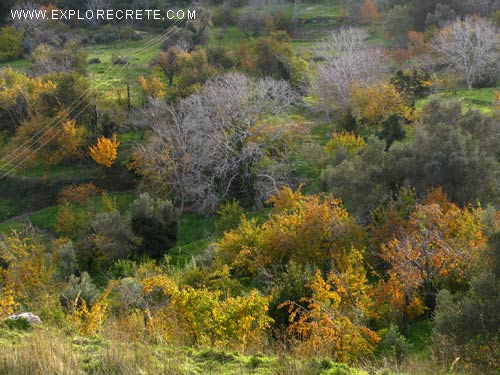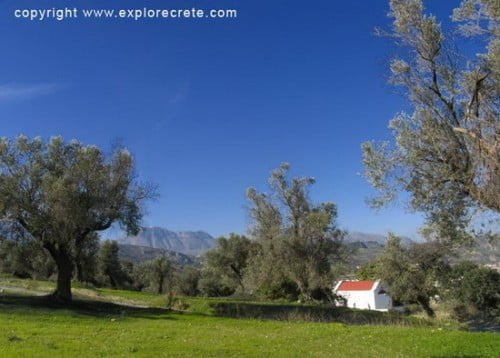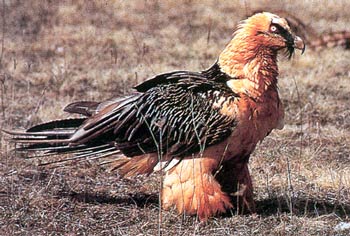Stars and Planets in the Summer Night Sky of Crete
Crete is not only beautiful by day but also by night. One aspect of its beauty is its neglected night sky. Very little has been written on the beauty of the night sky on Crete, with its bright stars, clear constellations and the streaming Milky Way.
The stars are clearly visible in the Cretan sky on warm summer nights, from any part of Crete. If you are on the south coast, however, where there are no large cities to dim the sky with their glare, the stars seem so bright and close that you want to reach out and touch them.
When you see the Cretan night sky for the first time, its beauty will immediately impress you. The vast number of stars you can see here, compared to the night skies of Northern Europe, is breathtaking. A big advantage is the location of Crete, situated far south, at 35° latitude.
You will need some time to navigate your way through all the bright stars embedded in the rich starry background. Once you’ve done this, the naked-eye treasures are waiting there to be explored. To start with, there is obviously the Milky Way, a belt filled with countless stars, open and globular clusters, gas and dust clouds. The moon and planets, too, will reveal their movements and secrets throughout the year.
So I wish you a night filled with wonders and pleasures in Crete.
Filip Feys
Sasteria observatory
It’s always fun in July and August to observe the stars, planets and many other celestial objects. The weather is warm and the first thing you will notice is the beautiful Milky Way. It stretches from deep in the south straight up like a river filled with stars, flowing due north through different constellations.
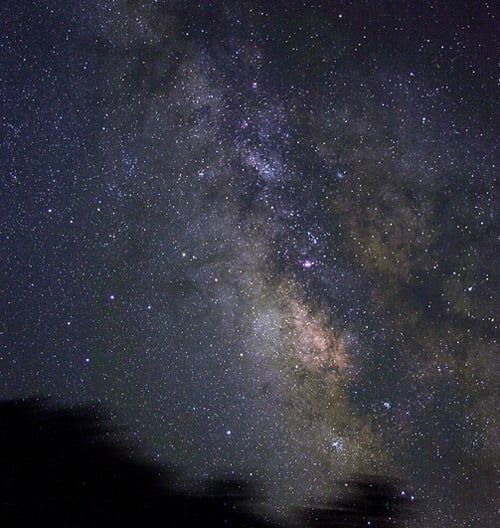
When you look at the Milky Way, you see the center of our galaxy and one of its galactic arms. The center of our galaxy lies in the direction of the constellation Sagittarius. Sagittarius means “Archer” and it is one of the constellations of the Zodiac. The chart below gives you the position of Jupiter at about 22.00 in July and August. All charts have north at the top, east to the left, west to the right and south at the bottom.
What can you expect to see of Jupiter with the unaided eye? The planet will be a very bright star. It moves slowly against the background stars. People with binoculars can spot up to four moons close to the planet’s disc. In the northwest, you will find an interesting area on Jupiter. With the unaided eye, you can spot different deep-sky features, such as a concentration of clouds in the Milky Way, fields filled with dense star clusters, and dark misty areas. In fact, some of the clouds are gas nebulas. Over time, they collapse to become new stars. Dark dusty areas are fields where starlight and nebulas are hidden, so they are invisible to the naked eye.
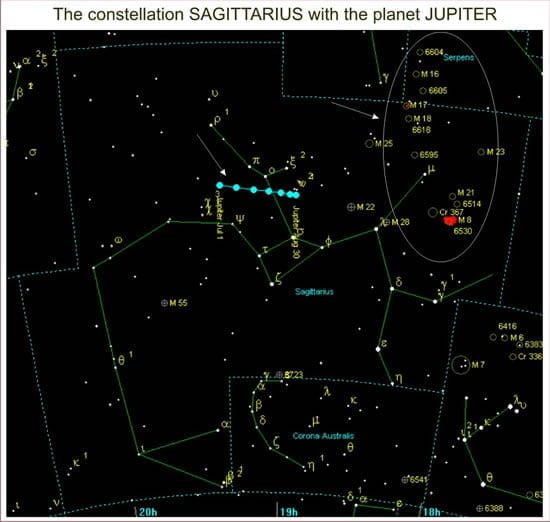
Jupiter is the biggest planet in our solar system. The volume of Jupiter is 70% of the total mass of all our planets. Jupiter has a small core of rock, surrounded by different gases. In the picture, you can see the different belt structures, circling the planet to form beautiful bands. To see details of the planet you need at least a 10 to 15-cm telescope.
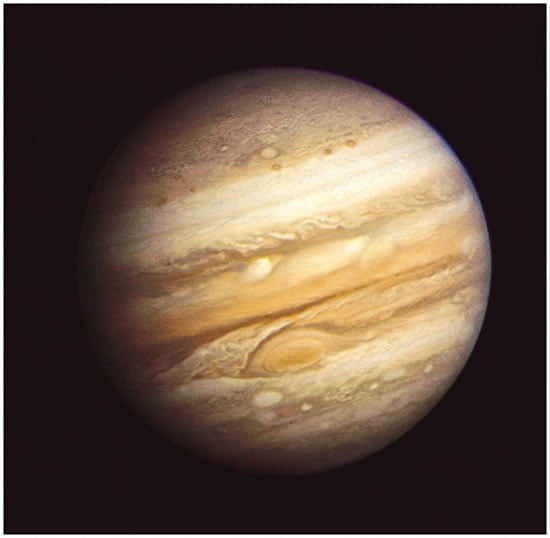
Yes, Jupiter is huge; the Earth can fit into this giant 1,300 times over. The equator measures 143,000 km. One rotation around the sun takes 11.86 Earth years. The planet rotates around its axis in 9 hours and 55 minutes. The Great Red Spot, as large as the Earth, is a hurricane.
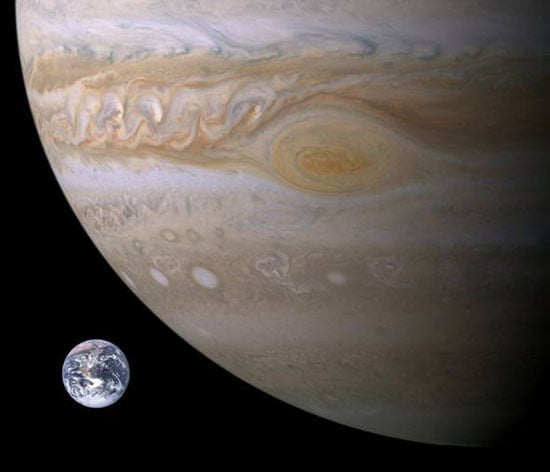
Different views of Jupiter’s planet disc.
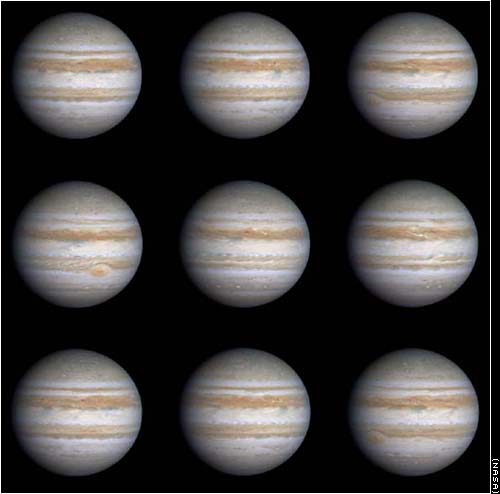
In the south, you can find another Zodiac constellation, Scorpius, the Scorpion. It is one of the 12 constellations that the sun passes through, due to the movement of the Earth during the course of the year. In Scorpio, we can spot the beautiful alpha star Antares, a magnitude 1.07 red giant. It is about 520 light-years distant from us. If you calculate that one light-year is: 300,000 km/sec x 60″ x 60′ x 24 hours x 365 days, you can see that space is huge. Light travels 9,460,800,000,000 km per year, which means that sunlight takes 8.5 minutes to reach us!
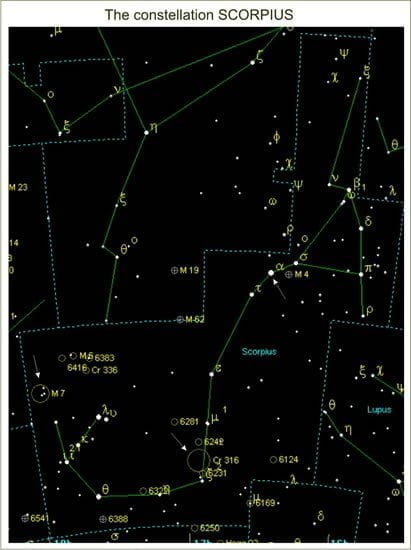
In the south, we can unravel the open cluster CR 316, which consists of stars spread out over an area of 105’. If you know that the apparent diameter of the moon in the sky is 30’ or 0.5°, you can see that the cluster looks 3.5 times bigger.
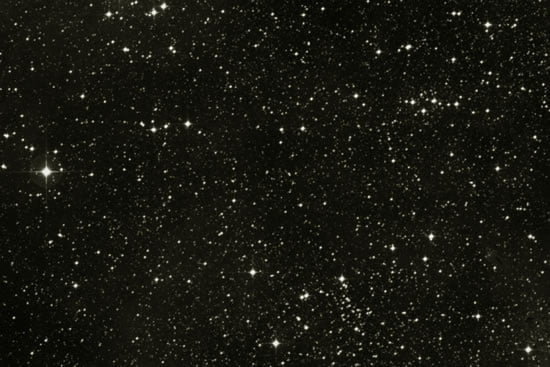
There’s also the open cluster M7. The field covers 80’ and contains about 80 members. With the naked eye, we can see a bright patch in the rich Milky Way. For people with good eyesight, try to spot the globular cluster M4 near Antares. A globular cluster is a very dense group of stars, with the naked eye only a faint patch is visible.
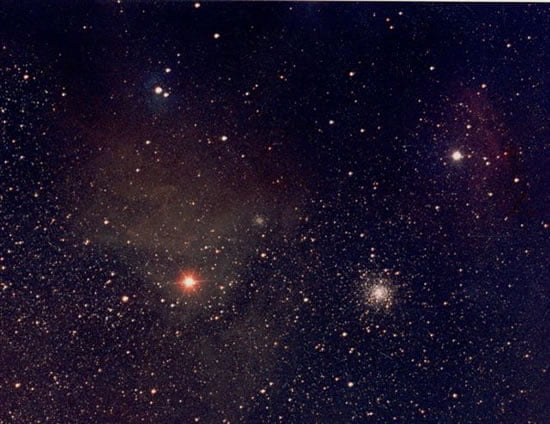
The dense star field around the alpha star Antares. A close-up of M4 gives you an idea of how compact the stars are in the center.
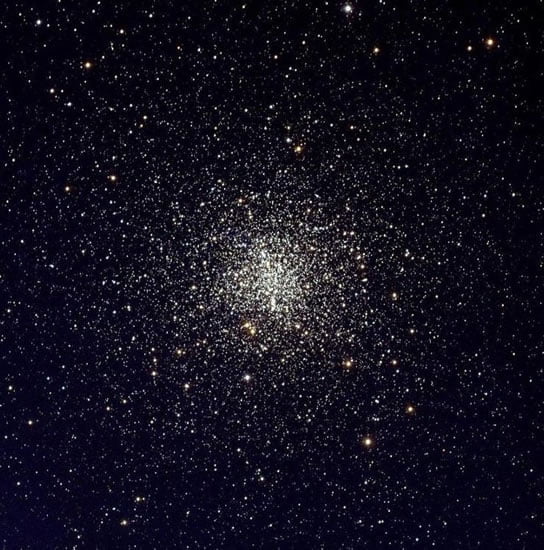
The last Zodiac constellation we find at 22.00 is Libra, the Scales. To the naked eye, there’s not much to see, only the brightest stars can give you some pleasure by looking for their color.
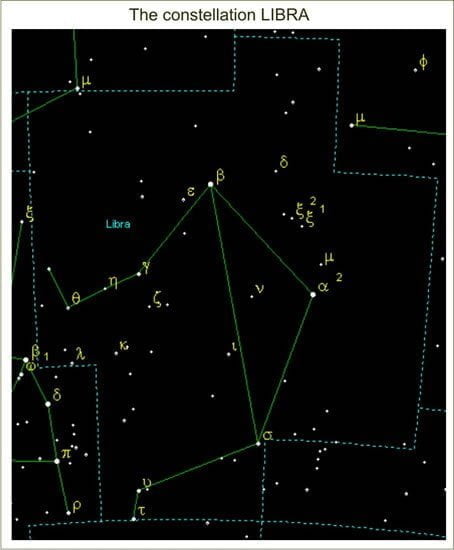
This picture shows you the different colors you can see with the naked eye. Try to find these stars and compare them with the others. When the stars are bluish, their surface temperatures are higher. Reddish stars have a cooler surface.
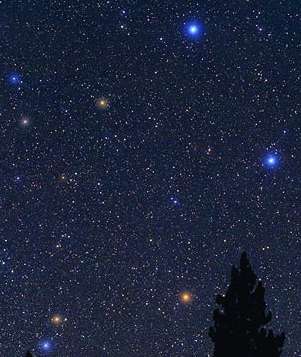
From there we travel north to the constellation Scutum, meaning “shield”. It’s a small star pattern squeezed between the constellations Aquila, Serpens, and Sagittarius. It’s a very beautiful area because it’s surrounded by the Milky Way. This means that you can find dense parts full of stars and nebulae.
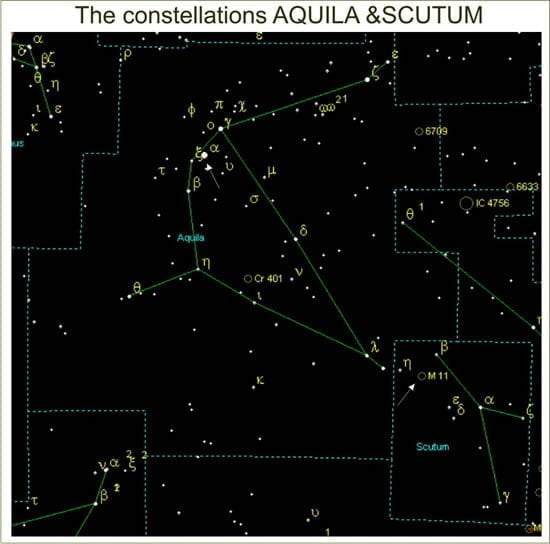
One of the dense patches visible to the naked eye is M11, a nice, big open star cluster. The size is 11’, a little less than half the apparent lunar diameter. An absolute must if you own binoculars. The M stands for Messier, a French astronomer who compiled a catalogue of over 100 bright objects. Most of them can only be observed with binoculars or a telescope.
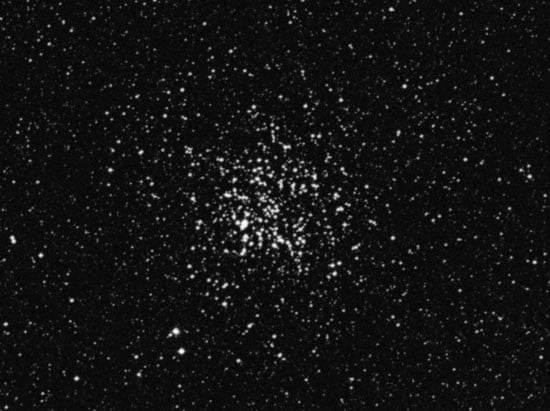
Looking at the chart, you can find the constellation Aquila, the Eagle. As the eagle flies through the Milky Way, it is an interesting sight to observe. It splits the Milky Way in two because there are a lot of dark clouds in that area. The alpha star Altair is bright and blue in color. The brightest star in the center of the picture above is Altair. The bright Scutum cloud is visible here at the lower end of the Milky Way. These are all easy features to find with the naked eye or small binoculars.
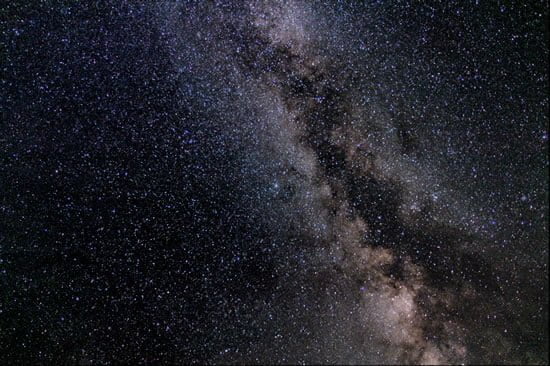
As we follow the flight of the eagle we reach the constellation Cygnus, the Swan. The pattern is easily visible to the naked eye. The constellation is embedded in a rich star field which makes it a pleasure to see.
Around the bright alpha star Deneb you can see large areas of stars and nebulae clumped together. These areas have names: the North America Nebula and the Pelican Nebula. Both are obvious as faint shapes against the background.
Looking to the southwest, we see the bright star gamma Sadr, this region is filed with bright stars surrounding Sadr.
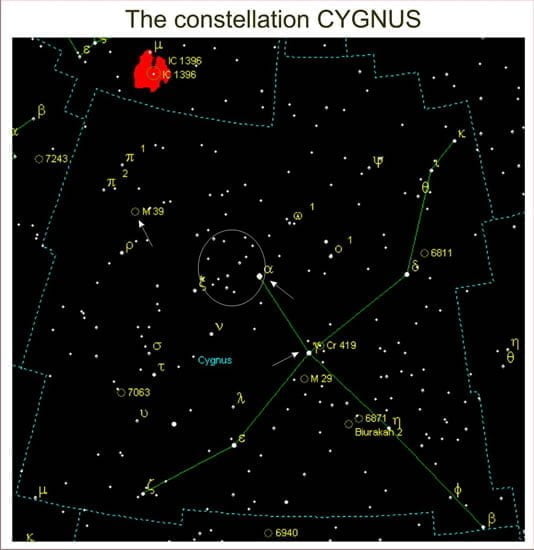
Here we can also spot a fairly bright open star cluster to observe with the unaided eye. This is M39, 31’ in diameter, a small concentration in the huge density of stars.
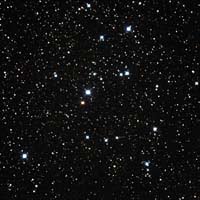
The picture above gives you a good impression of the North America Nebula. The red color will be difficult to see, our eyes are not very sensitive to red wavelengths. The nebula is located to the east of the alpha star Deneb, as shown above in the chart of the constellation.
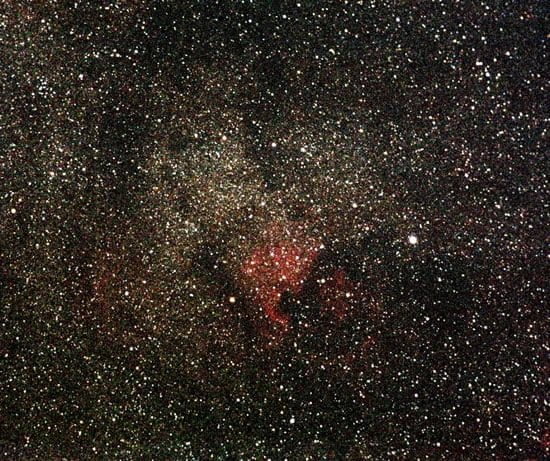
To the west, we find a nice little constellation named Lyra, the Lyre. It’s a beautiful group of stars high in the sky. The brightest star, Vega, is a blue-white color. This sun is one of the stars of the Summer Triangle, along with Deneb and Altair.
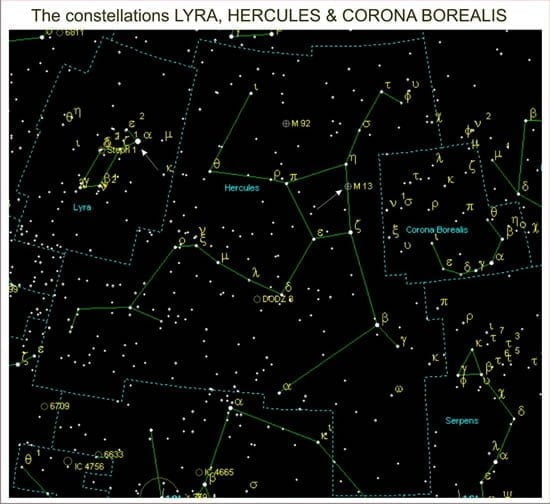
Close to the delta star, you can spot the only open star cluster visible in Lyra. It is called Steph 1 and is 20’ in diameter.
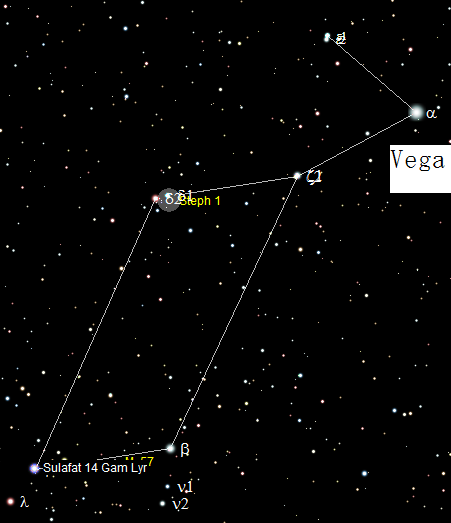
When we look further west, we encounter the mighty Hercules, meaning “strong man”. As you look for it, search for the big square. There you find M13, the biggest globular cluster in the northern hemisphere. Although is 20’ in diameter, it is only just visible to the naked eye. It is near to star η (eta) in the square.
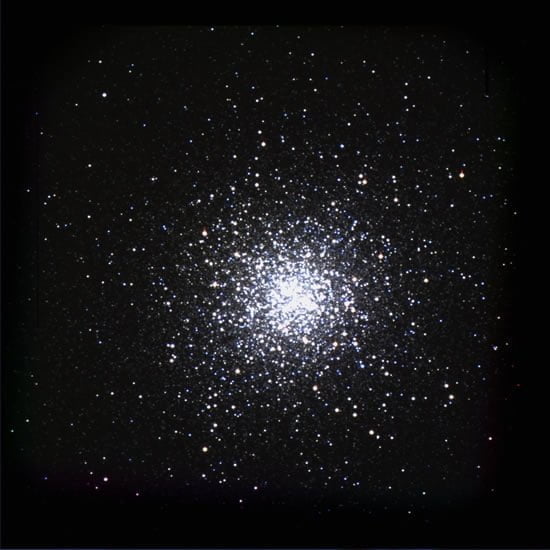
Now we are closing in on the Pole Star. There we find the constellation Ursa Minor, the Little Bear. The shape of the Little Bear is a square with its tail pointing north. The last star in the tail is Polaris, a very important star. This star is close to the Earth’s axis in the north. Polaris is not the brightest star but we use this star to align our telescopes so they can work with GO TO technology. It’s a good way to find north when you have to navigate in the dark.
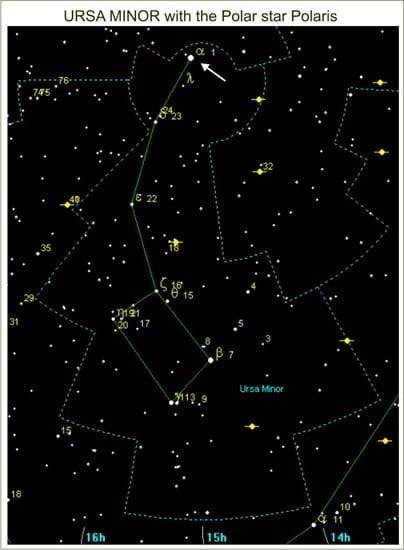
How to locate Polaris by using the Plough or Big Dipper. The constellations move during the year because our planet is turning around the sun. Look at the drawing to see how to find Polaris. Draw an imaginary line, 5 times the distance between the last two stars in the square of the Big Dipper, and you come to Polaris.
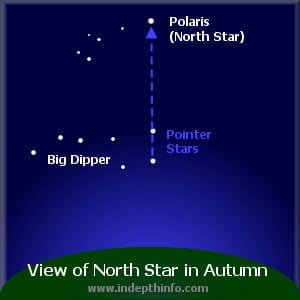
The last constellation is Cepheus, meaning King Cepheus. This constellation is in the shape of a house. The rooftop points to the Pole Star. In the southeast, you can spot a bit of the Milky Way. It’s so obvious that it is difficult to make telescopic observations of that area.
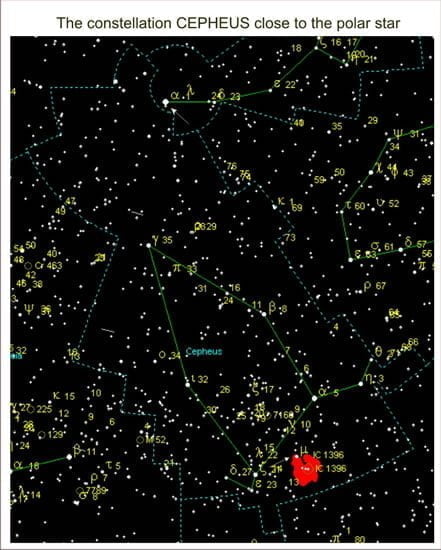
What can we see, μ(Mu) is a beautiful orange star located in the southwest of the constellation. It’s also the most interesting place to look with the unaided eye. In very dark areas, you can see a dim star cluster surrounded by a faint nebula. Above is a close up of the area around μ(Mu) Cephei.
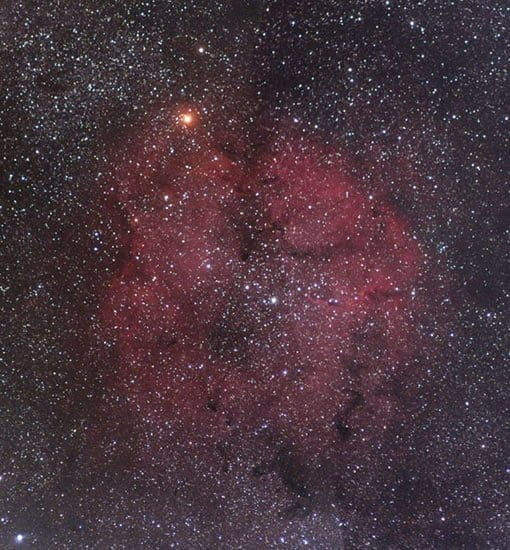
Of course, there is also the moon. Our closest neighbor is still about 384,405 km away from us. Its diameter is 3,476 km. What can we see at this distance? Different areas, each with its own color. We call these areas “Maria” or seas. These are huge areas with a lava-flooded floor caused by eruptions in the early life of the moon. All these shapes show you the typical face we see when the moon is full. If you want to see craters, you need small binoculars. On August 16, there’s a partial lunar eclipse, from 21.35 to 00.44. The moon will be in the constellation Capricornus, east of the constellation Sagittarius. See www.sasteria.com for further details of this event (event & prices).
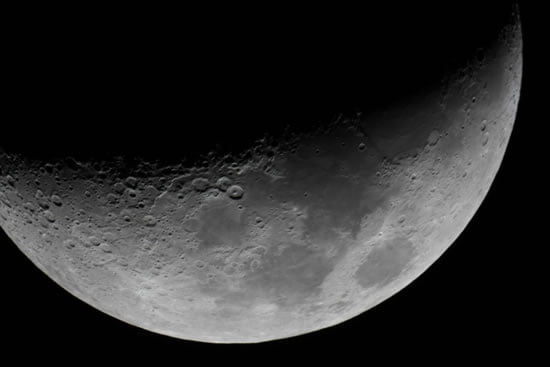
The phases of a total eclipse
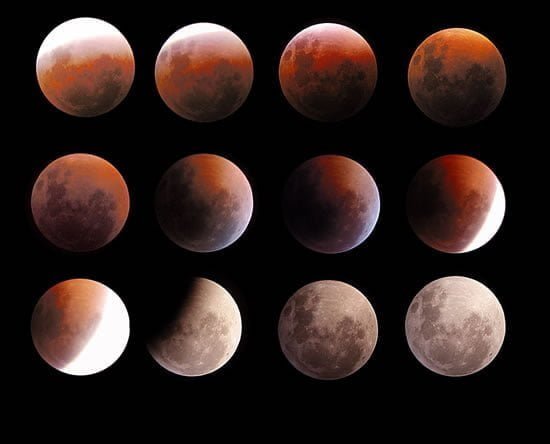
Here you see what a lunar eclipse can look like. The Earth’s shadow covers part of the moon or the full lunar disc, depending on whether it is a partial or total eclipse.
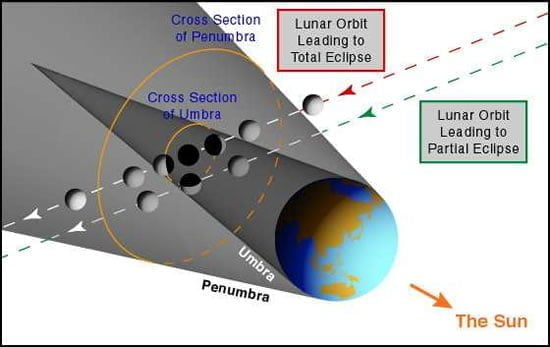
Yes, there are other planets to see in the summer. To start with, there is Venus. Venus will be rising in mid-July but still very low in the twilight. The best time to spot the planet is in the west just after sunset in the month of August. It will be the first bright star visible in the sky.
Mercury is visible in the eastern sky, just before sunrise in early July.
Then there’s an eye-catching sight on the night of August 12: The Perseid meteorite shower. Every year this shower returns at the same date. The only thing that changes is the time. The best way is to watch through the whole night, then you are sure to catch the peak. The meteorites seem to come from the direction of the constellation Perseus.
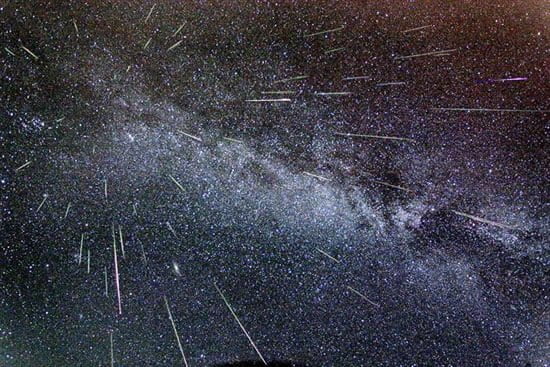
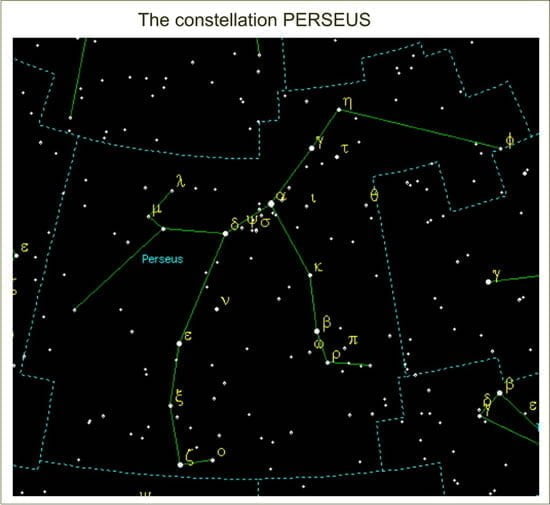
So there are lots of things to see in these two months.
Happy stargazing!
Filip Feys
Sasteria Observatory
- The night sky of Crete in summer
- The sky of Crete in autumn
- The sky of Crete in winter in November and December
- The sky of Crete in winter in January and February
- Greek words for stars, zodiac signs and planets
© explorecrete.com All Rights Reserved. Reproduction or copying without permission is prohibited.

